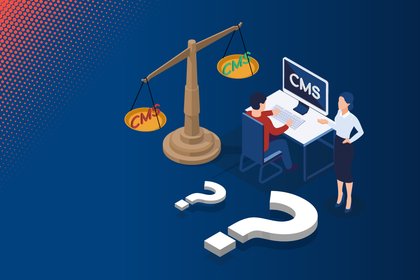"That's Not Worth It for a Small Technical Documentation Department" – What A Customer Says
A little while ago, we posted an interview with Michael Rohde from iTAC Software AG about using ST4 in a one-person Technical Documentation department. Today, Lars Heßling from SICAT tells us why he works with ST4. He, too, is a "lone fighter."

Our company, SICAT GmbH & Co.KG, manufactures 3D software, drilling templates, and therapeutic appliances for the medical industry. These are products for the area of implantology, functional diagnostics, and therapy for dental and sleep medicine. In brief: the doctor uses the software to capture and combines data. In a second step, he plans the therapy virtually in 3D. And finally, SICAT manufactures the respective drilling templates or therapeutic appliances according to the plans.
How We Got A CMS
Before my time at SICAT, as in many companies, the user guides were created as a by-product by software developers. They used the DocBook DTD. Production was done with the help of a self-selected set of tools.
When the product palette was extended, the company reacted just in time and decided to create a technical authoring team. This is how I joined the company in 2012. I had enough time to organize the work processes, which included deciding with which software I wanted to work in the future. It was quickly clear that I would only be able to manage my tasks with a content mangagement system. After diligent research, two systems remained, which I then tested in regards to our requirements. In the end, I made the decision for SCHEMA ST4 because the system made it easier to compile documents, and also because our mother company Sirona uses the same content management system.
The aspect of standardization was important from the beginning. This is why I invested time in creating a style guide right at the beginning. There are two good reasons for the creation and maintenance effort involved: for one, the unified structure and style of our documents allow our users to focus on the correct usage of our products. For another, it may well be possible that my one-man-team may one day turn into a real Technical Documentation department.
To Sum Up: Great Support, Hardly Any Disadvantages
For us, the biggest advantages of SCHEMA ST4 are the easy document compilation. Our expectations were completely met in this respect. Also, and this was especially important in the beginning, the Layout-Editor. This made it possible to do simple adjustments without XPath knowledge, which from my point of view however should be acquired in the long run.
What really helps when describing our software is the Callout-Editor, which allows me to easily subtitle screenshots.
Another - completely unexpected - advantage was the variables tables, with which you can feed Excel tables. Our developers wrote a tool for their development environment, which exports our software texts in Excel tables. This allows me to import the texts directly, and to represent them exactly like we use them in the software.
However, I'd really like for some things to be easier - even if ST4 is an expert system: One of the biggest disadvantages is the fact that certain layout settings can't be changed directly in SCHEMA, even with CSS knowledge, e.g. margin widths for HTML productions.
Conclusion: A Well-Rounded Product
Based on our experience up to now, ST4 is well-suited for use in small Technical Documentation departments - even in one-person Technical Documentation departments. Core topics such as standardization, modularization and reuse are just as important as for large teams. Specifically as the only technical writer, I can clearly see the efficiency gained.
One tip for ST4 users: Use the free webinars offered by SCHEMA. I notice time and again that I know a lot, but not everything about ST4. The time invested is quickly offset by increased efficiency.
Lars Heßling studied technical journalism in Sankt Augustin near Bonn. Focus of this course of studies is to explain complex technical concepts in simple words. This is - apart from fulfilling regulatory requirements - also the goal of user guides. After his studies Lars Heßling quickly found that journalism is rather uncertain terrain in regards to job security, which is why he has been working since 2010 as technical writer, first for a service provider in Erlangen, then at SICAT in Bonn.


